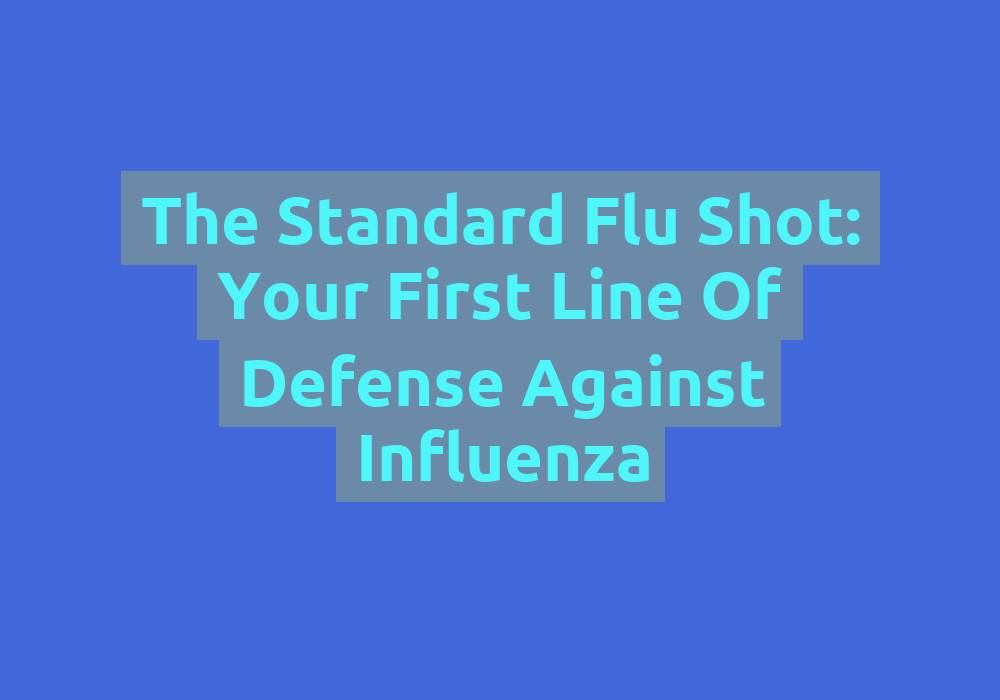Coping with Restless Leg Syndrome

Restless Leg Syndrome (RLS) is a neurological disorder characterized by an irresistible urge to move the legs, often accompanied by uncomfortable sensations. This condition can significantly disrupt one’s sleep and daily activities, leading to frustration and decreased quality of life. If you are dealing with RLS, it’s essential to understand coping strategies and lifestyle modifications that can help alleviate symptoms. In this article, we will explore various techniques that can assist in managing and coping with Restless Leg Syndrome effectively.
Understanding Restless Leg Syndrome
Restless Leg Syndrome (RLS) is a condition that primarily affects the legs but can also manifest in the arms and other body parts. People with RLS experience uncomfortable sensations such as crawling, tingling, or creeping in the affected limbs. These sensations are often accompanied by an irresistible urge to move the legs, especially during rest or sleep. As a result, individuals with RLS may experience significant sleep disturbances, leading to daytime fatigue and decreased overall well-being.
While the exact cause of RLS is still unknown, several factors are believed to contribute to its development. Genetic predisposition is thought to play a role, as RLS often runs in families. Additionally, iron deficiency has been linked to RLS, suggesting that maintaining adequate iron levels in the body may help alleviate symptoms. Certain medications, such as antihistamines or antidepressants, can also worsen RLS symptoms. Chronic conditions like kidney disease or diabetes have also been associated with RLS. Consulting with a healthcare professional is crucial to obtain an accurate diagnosis and discuss potential treatment options.
Lifestyle Modifications for Coping with RLS
While there is no cure for Restless Leg Syndrome, certain lifestyle modifications can help alleviate symptoms and improve overall well-being. Consider implementing the following strategies:
1. Establish a Consistent Sleep Routine
Maintaining a regular sleep schedule can be immensely beneficial for individuals with RLS. Going to bed and waking up at the same time every day helps regulate the body’s internal clock and promotes better sleep quality. It is also important to ensure that you are getting enough sleep each night. Aim for a minimum of 7-8 hours of sleep to reduce daytime fatigue. Creating a relaxing bedtime routine, such as taking a warm bath, reading a book, or practicing relaxation techniques like deep breathing exercises, can further enhance sleep quality.
2. Engage in Regular Exercise
Regular exercise has been shown to reduce RLS symptoms and improve sleep. Engaging in physical activities like walking, swimming, or cycling can help alleviate discomfort and promote relaxation. Aim for at least 30 minutes of moderate-intensity exercise most days of the week. However, it is important to avoid vigorous workouts close to bedtime, as this can increase alertness and make it harder to fall asleep.
In addition to aerobic exercise, incorporating stretching and strengthening exercises specifically targeting the legs can be beneficial. Stretching the leg muscles before bedtime may help alleviate RLS symptoms and promote better sleep.
3. Practice Stress Management Techniques
Stress and anxiety can exacerbate Restless Leg Syndrome symptoms. Incorporating stress management techniques into your daily routine can help alleviate discomfort and promote relaxation. Deep breathing exercises, meditation, yoga, and mindfulness techniques are effective ways to reduce stress levels. These practices not only help manage RLS symptoms but also improve overall well-being.
4. Create a Sleep-Friendly Environment
Creating a sleep-friendly environment can significantly improve sleep quality for individuals with RLS. Ensure that your bedroom is cool, quiet, and free from distractions. Consider using blackout curtains or a white noise machine to block out any external disturbances. Investing in a comfortable mattress and pillows that provide proper support for your body can also contribute to better sleep. It is important to create a sleep environment that promotes relaxation and minimizes disruptions.
5. Maintain Proper Sleep Hygiene
Practicing good sleep hygiene is essential for managing Restless Leg Syndrome. Avoid consuming caffeine or nicotine close to bedtime, as these stimulants can disrupt sleep. It is recommended to limit or avoid alcohol consumption, as it can also interfere with sleep patterns. Establish a routine of winding down before bed by avoiding stimulating activities, such as using electronic devices like smartphones or laptops. The blue light emitted by these devices can interfere with your sleep-wake cycle. Instead, engage in relaxing activities like reading a book or taking a warm bath to prepare your body for sleep.
6. Hot and Cold Therapy
Applying hot or cold packs to your legs can provide temporary relief from RLS symptoms. Experimenting with both heat and cold therapy can help determine which works best for you. For some individuals, a warm bath before bedtime can help relax the muscles and alleviate discomfort. Others may find relief by using ice packs wrapped in a towel to numb the affected area. It is important to find what works for you and incorporate it into your bedtime routine.
7. Consider Alternative Therapies
Some individuals find relief from RLS symptoms through alternative therapies like acupuncture, massage, or chiropractic treatments. While these therapies may not work for everyone, they are worth exploring under the guidance of a qualified practitioner. These approaches focus on promoting relaxation, improving circulation, and reducing muscle tension, which can help alleviate RLS symptoms.
8. Identify and Manage Triggers
Keeping a symptom diary can help identify triggers that worsen your RLS symptoms. Certain foods, medications, or activities may exacerbate discomfort. Common triggers include caffeine, nicotine, certain medications (such as antihistamines or antidepressants), and alcohol. By pinpointing and avoiding these triggers, you can effectively manage your symptoms and reduce the frequency and intensity of RLS episodes.
9. Consult with a Healthcare Professional
If lifestyle modifications and self-help strategies are insufficient in managing your RLS symptoms, it is essential to seek professional medical advice. A healthcare professional with expertise in sleep disorders or neurology can provide you with tailored treatment options. This may include prescription medications specifically designed to alleviate RLS symptoms or iron supplementation if iron deficiency is detected. It is important to work closely with a healthcare professional to find the most effective treatment plan for your individual needs.
Remember, coping with Restless Leg Syndrome requires patience and a comprehensive approach. By incorporating these coping strategies into your daily routine and working closely with healthcare professionals, you can minimize the impact of RLS on your life and improve your overall well-being.
Please note that the information provided in this article is for informational purposes only and should not replace professional medical advice. Always consult with a healthcare professional for accurate diagnosis and appropriate treatment options for Restless Leg Syndrome.
The improved and expanded article is presented below in markdown format:
# Coping with Restless Leg Syndrome
Restless Leg Syndrome (RLS) is a neurological disorder characterized by an irresistible urge to move the legs, often accompanied by uncomfortable sensations. This condition can significantly disrupt one's sleep and daily activities, leading to frustration and decreased quality of life. If you are dealing with RLS, it's essential to understand coping strategies and lifestyle modifications that can help alleviate symptoms. In this article, we will explore various techniques that can assist in managing and coping with Restless Leg Syndrome effectively.
Understanding Restless Leg Syndrome
Restless Leg Syndrome (RLS) is a condition that primarily affects the legs but can also manifest in the arms and other body parts. People with RLS experience uncomfortable sensations such as crawling, tingling, or creeping in the affected limbs. These sensations are often accompanied by an irresistible urge to move the legs, especially during rest or sleep. As a result, individuals with RLS may experience significant sleep disturbances, leading to daytime fatigue and decreased overall well-being.
While the exact cause of RLS is still unknown, several factors are believed to contribute to its development. Genetic predisposition is thought to play a role, as RLS often runs in families. Additionally, iron deficiency has been linked to RLS, suggesting that maintaining adequate iron levels in the body may help alleviate symptoms. Certain medications, such as antihistamines or antidepressants, can also worsen RLS symptoms. Chronic conditions like kidney disease or diabetes have also been associated with RLS. Consulting with a healthcare professional is crucial to obtain an accurate diagnosis and discuss potential treatment options.
Lifestyle Modifications for Coping with RLS
While there is no cure for Restless Leg Syndrome, certain lifestyle modifications can help alleviate symptoms and improve overall well-being. Consider implementing the following strategies:
1. Establish a Consistent Sleep Routine
Maintaining a regular sleep schedule can be immensely beneficial for individuals with RLS. Going to bed and waking up at the same time every day helps regulate the body's internal clock and promotes better sleep quality. It is also important to ensure that you are getting enough sleep each night. Aim for a minimum of 7-8 hours of sleep to reduce daytime fatigue. Creating a relaxing bedtime routine, such as taking a warm bath, reading a book, or practicing relaxation techniques like deep breathing exercises, can further enhance sleep quality.
2. Engage in Regular Exercise
Regular exercise has been shown to reduce RLS symptoms and improve sleep. Engaging in physical activities like walking, swimming, or cycling can help alleviate discomfort and promote relaxation. Aim for at least 30 minutes of moderate-intensity exercise most days of the week. However, it is important to avoid vigorous workouts close to bedtime, as this can increase alertness and make it harder to fall asleep.
In addition to aerobic exercise, incorporating stretching and strengthening exercises specifically targeting the legs can be beneficial. Stretching the leg muscles before bedtime may help alleviate RLS symptoms and promote better sleep.
3. Practice Stress Management Techniques
Stress and anxiety can exacerbate Restless Leg Syndrome symptoms. Incorporating stress management techniques into your daily routine can help alleviate discomfort and promote relaxation. Deep breathing exercises, meditation, yoga, and mindfulness techniques are effective ways to reduce stress levels. These practices not only help manage RLS symptoms but also improve overall well-being.
4. Create a Sleep-Friendly Environment
Creating a sleep-friendly environment can significantly improve sleep quality for individuals with RLS. Ensure that your bedroom is cool, quiet, and free from distractions. Consider using blackout curtains or a white noise machine to block out any external disturbances. Investing in a comfortable mattress and pillows that provide proper support for your body can also contribute to better sleep. It is important to create a sleep environment that promotes relaxation and minimizes disruptions.
5. Maintain Proper Sleep Hygiene
Practicing good sleep hygiene is essential for managing Restless Leg Syndrome. Avoid consuming caffeine or nicotine close to bedtime, as these stimulants can disrupt sleep. It is recommended to limit or avoid alcohol consumption, as it can also interfere with sleep patterns. Establish a routine of winding down before bed by avoiding stimulating activities, such as using electronic devices like smartphones or laptops. The blue light emitted by these devices can interfere with your sleep-wake cycle. Instead, engage in relaxing activities like reading a book or taking a warm bath to prepare your body for sleep.
6. Hot and Cold Therapy
Applying hot or cold packs to your legs can provide temporary relief from RLS symptoms. Experimenting with both heat and cold therapy can help determine which works best for you. For some individuals, a warm bath before bedtime can help relax the muscles and alleviate discomfort. Others may find relief by using ice packs wrapped in a towel to numb the affected area. It is important to find what works for you and incorporate it into your bedtime routine.
7. Consider Alternative Therapies
Some individuals find relief from RLS symptoms through alternative therapies like acupuncture, massage, or chiropractic treatments. While these therapies may not work for everyone, they are worth exploring under the guidance of a qualified practitioner. These approaches focus on promoting relaxation, improving circulation, and reducing muscle tension, which can help alleviate RLS symptoms.
8. Identify and Manage Triggers
Keeping a symptom diary can help identify triggers that worsen your RLS symptoms. Certain foods, medications, or activities may exacerbate discomfort. Common triggers include caffeine, nicotine, certain medications (such as antihistamines or antidepressants), and alcohol. By pinpointing and avoiding these triggers, you can effectively manage your symptoms and reduce the frequency and intensity of RLS episodes.
9. Consult with a Healthcare Professional
If lifestyle modifications and self-help strategies are insufficient in managing your RLS symptoms, it is essential to seek professional medical advice. A healthcare professional with expertise in sleep disorders or neurology can provide you with tailored treatment options. This may include prescription medications specifically designed to alleviate RLS symptoms or iron supplementation if iron deficiency is detected. It is important to work closely with a healthcare professional to find the most effective treatment plan for your individual needs.
Remember, coping with Restless Leg Syndrome requires patience and a comprehensive approach. By incorporating these coping strategies into your daily routine and working closely with healthcare professionals, you can minimize the impact of RLS on your life and improve your overall well-being.
Please note that the information provided in this article is for informational purposes only and should not replace professional medical advice. Always consult with a healthcare professional for accurate diagnosis and appropriate treatment options for Restless Leg Syndrome.
FAQ
Q: What is Restless Leg Syndrome (RLS)?
A: Restless Leg Syndrome (RLS) is a neurological disorder characterized by an irresistible urge to move the legs, often accompanied by uncomfortable sensations such as crawling, tingling, or creeping. It can significantly disrupt sleep and daily activities, leading to fatigue and decreased quality of life.
Q: What are some lifestyle modifications for coping with RLS?
A: Some lifestyle modifications for coping with RLS include establishing a consistent sleep routine, engaging in regular exercise, practicing stress management techniques, creating a sleep-friendly environment, maintaining proper sleep hygiene, using hot and cold therapy, considering alternative therapies, and identifying and managing triggers.
Q: How can exercise help alleviate RLS symptoms?
A: Regular exercise, such as walking, swimming, or cycling, has been shown to reduce RLS symptoms and improve sleep quality. It helps alleviate discomfort and promotes relaxation. Stretching and strengthening exercises specifically targeting the legs can also be beneficial.
Q: When should I consult with a healthcare professional for RLS?
A: If lifestyle modifications and self-help strategies are insufficient in managing your RLS symptoms, it is essential to seek professional medical advice. A healthcare professional with expertise in sleep disorders or neurology can provide you with tailored treatment options, including prescription medications or iron supplementation if necessary.
“,13-Aug-23
Sleep Disorders


















